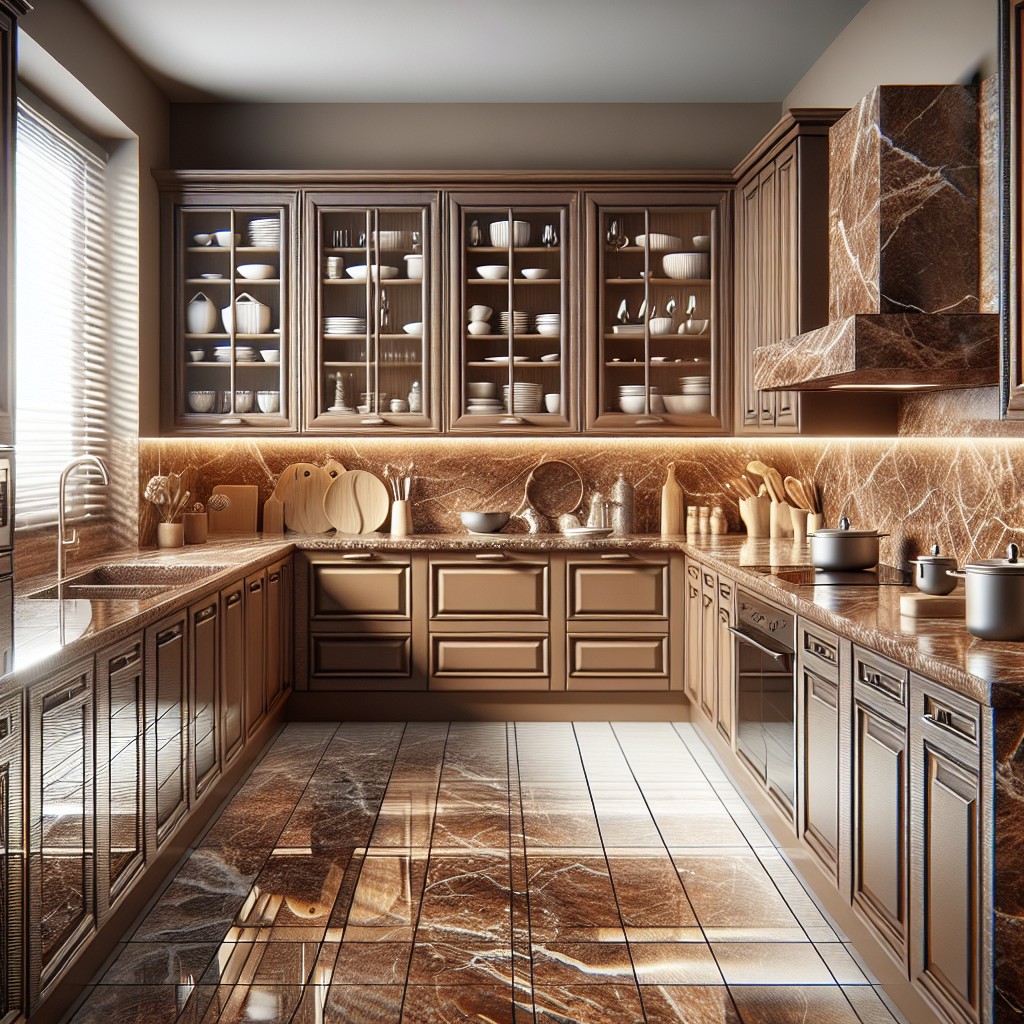Last updated on
Transforming your dining room into a functional office can be an exciting undertaking because it offers a practical solution for those needing a dedicated workspace at home.
Key takeaways:
- Assess available space, natural light, furniture, and acoustics.
- Declutter the dining room, remove non-essential items.
- Select a functional desk that fits the room and offers storage.
- Choose comfortable, ergonomic seating for long work hours.
- Optimize lighting with natural light and artificial fixtures.
What's Inside
Assessing the Current Dining Room Space

Begin by taking precise measurements of the room to understand the available space. Consider the flow of movement around the room to ensure that converting it into an office won’t disrupt household traffic.
Examine the natural light sources as well as the placement of windows and doors; these elements will affect where you position your desk and computer to prevent glare and backlighting during virtual meetings.
Analyze existing furniture: can anything be repurposed or should it be removed? Take note of power outlets and phone jacks; these will dictate where you can set up your electronics without relying too heavily on extension cords.
Lastly, observe the room’s acoustics as they will affect concentration and call quality. This initial assessment will provide a blueprint for transforming the space efficiently.
Decluttering the Dining Room

Embarking on this transformation means starting with a clean slate. Remove any non-essential items from the space such as tablecloths, decorative pieces, and extra chairs. This will help you envision the room’s new purpose and prevent distractions when working.
Keep only the dining room furniture that can double as office elements. For instance, a buffet might become a file storage area, but if it serves no purpose in your office setup, it’s time for it to go. Sell, donate, or repurpose furniture and decor that no longer fits your vision. Remember, less is often more in a space where focus and productivity are paramount.
Use this as an opportunity to digitize or recycle old paperwork and clear the area of any household items that have accumulated over time. A decluttered room not only promotes efficiency but also contributes to a clearer mind.
Selecting a Functional Desk
When picking out your desk, prioritize function over form. Here’s what to look for:
Size: It should comfortably fit your working gear while respecting the room’s proportions.
Shape: L-shaped desks often optimize corner space, while rectangular ones are a classic fit for most layouts.
Height: Ensure it’s ergonomic – your forearms should rest parallel to the floor when typing.
Material: Durability matters. Hardwoods are sturdy, while glass or metal can sleekly blend into the décor.
Storage: Built-in drawers or shelves keep supplies handy without cluttering the surface.
Remember, your desk is the cornerstone of productivity. Choose wisely to make your transformed space work for you.
Choosing Comfortable Seating
When it comes to long hours of work, the right chair can make all the difference. Opt for an ergonomically designed option that supports good posture—your back will thank you.
Look for features such as adjustable height and lumbar support to tailor the fit to your body’s needs. Don’t skimp on comfort; a cushioned seat can ease the strain on your hips and thighs.
If your workspace doubles as a spot for dining, consider a chair style that complements both settings, maintaining a cohesive aesthetic. Test out a few chairs to find the perfect balance between comfort and style, ensuring it’s a seat where you can happily settle into your workflow.
Appropriate Lighting for Work
Getting the lighting right in your workspace is crucial to maintain productivity and reduce eye strain. Start with maximizing natural light; it not only boosts mood but also enhances focus. Position your desk near a window if possible. However, avoid direct sunlight that can cause glare. Use adjustable blinds or sheer curtains to regulate light throughout the day.
When natural light isn’t enough, supplement with artificial lighting. A task lamp with a moveable arm can direct light exactly where you need it, ideal for intricate tasks or reading documents. Opt for LED bulbs as they offer a cleaner, brighter light and are energy efficient. Aim for bulbs that mimic daylight, with a color temperature around 5000 Kelvin for a neutral, alert working vibe.
Overhead lighting, on the other hand, should provide ambient light without being too harsh or causing a shadow. A ceiling fixture with a dimmer switch allows for adjusting the brightness levels depending on the time of day or the task at hand.
Remember, good lighting should create a comfortable environment that’s conducive to working long hours without compromising on your wellbeing.
Implementing Storage Solutions
Maximizing vertical space keeps the floor clear and the room spacious. Consider wall-mounted shelves or tall, narrow bookcases that reach toward the ceiling. Opt for furniture that doubles as storage, like a desk with drawers or a credenza that can house office supplies.
To reduce visual clutter, utilize decorative boxes or binders that complement the room’s aesthetic. Additionally, a rolling file cabinet can be a versatile choice, easily tucked away when not in use. Remember, maintaining an organized space is key to productivity, so invest in storage that offers both function and style.
Cord Management Techniques
Eliminate unsightly tangles and keep your new office space both safe and efficient with smart cord management. Use cable organizers or clips to secure wires along furniture legs and walls.
Consider investing in a desk with built-in cable management features to minimize clutter. If that’s not an option, adhesive hooks can guide cables neatly beneath the table surface.
For power strips and excess cords, a cable management box not only hides them but also prevents dust build-up. For devices that you move often, retractable cable reels can avoid excessive lengths of cords lying around.
Remember, labeling each cord at both ends saves you time when you need to identify them quickly for troubleshooting or reconfiguring your setup.
Creating Visual Separation
A well-defined workspace can boost productivity by signaling your brain that it’s time to focus. Use room dividers or open shelving units to establish a sense of separation between your office and the dining area.
If you prefer a lighter touch, area rugs can anchor your office space visually without adding bulk. For those who enjoy a bit of DIY, a painted accent wall or even a section of peel-and-stick wallpaper can delineate your work zone and give it a distinct feel from the rest of the room.
To maintain a cohesive look throughout your multifunctional space, coordinate the color and style of your separators with the existing decor.
Personalizing With Decor
Incorporating personal touches transforms your office space into an area that’s uniquely yours, boosting both mood and productivity. Select art that inspires or calms you, be it framed professional certificates, vivid paintings, or motivational quotes. Don’t overlook the power of small desk accessories – a favorite mug for pens, a stylish lamp, or a decorative paperweight can make a significant impact.
Think about the textures and materials that appeal to you; perhaps a woven rug under your desk chair or a soft throw over your chair’s back. These elements not only add aesthetic value but also comfort, making long work periods more pleasant.
Plants can enliven the space, reduce stress, and cleanse the air. Choose low-maintenance options if you’re not a green thumb. Remember, the goal is to strike a balance between personality and function – your workspace should be a source of inspiration, not distraction. Keep decor aligned with your work needs and personal taste for a harmonious blend of professionalism and personality.
Adjusting Color Schemes
The right color palette can enhance focus and productivity. Cooler tones like blues and greens have a calming effect, which is beneficial in a high-stress work environment. On the other hand, warmer shades such as yellow can stimulate creativity and energize the space.
For those who prefer neutral hues, opt for soft greys or off-whites that provide a clean and distraction-free backdrop. These shades also reflect natural light better, making the space appear larger.
It’s important to consider the psychological impact of color. Avoid overly vibrant patterns that might be distracting. If you love bold colors, introduce them in small doses through accessories or artwork.
To transition smoothly from a dining room to an office, try a fresh coat of paint. This not only changes the mood but also demarcates the space as distinct from the rest of your home. If painting isn’t an option, removable wallpaper or wall decals are great alternatives to inject personality and define the area as a workspace.
Incorporating Greenery
Adding plants to your workspace isn’t just about aesthetics; it enhances air quality and can boost your mood and productivity. When choosing foliage, opt for low-maintenance varieties like snake plants or ZZ plants that can thrive in indoor conditions.
If your office area lacks natural light, consider shade-tolerant species such as pothos or philodendrons. For small spaces, desktop succulents or a terrarium can introduce greenery without taking up too much room.
To keep your workspace organized and free of clutter, use hanging planters or wall-mounted shelves. This keeps plants off your desk while still bringing the benefits of nature into your new home office. Remember to rotate your plants occasionally to ensure even growth, especially if light comes from one direction.
Utilizing Wall Space
Shelves and floating units offer storage without eating into floor space, perfect for books, office supplies, and decorative items that inspire productivity.
A wall-mounted pegboard can be customized with hooks and baskets to keep essentials within reach.
Dry-erase boards or chalkboard paint turn a segment of the wall into a brainstorming hub or a to-do list, keeping tasks visible and organized.
Consider a fold-down wall desk that tucks away when not in use, maximizing the room’s versatility.
If privacy is needed, a room divider or curtain can be hung to differentiate the work area from the rest of the space.
Remember, treating your walls as functional elements of your office setup not only saves space but can also keep you organized and focused.
Setting Up Technology for Office Use
Ensuring a reliable internet connection is crucial; a Wi-Fi range extender or a hardwired Ethernet connection can boost productivity.
Invest in adequate power strips and surge protectors to safeguard your electronics and provide plenty of outlets for your devices.
Consider a printer-scanner combo to maximize functionality without sacrificing space.
For video conferences, a high-quality webcam and microphone can make a significant difference, while headphones can help in maintaining focus during meetings.
Keep software up to date and secure with antivirus and firewall protection to safeguard your work.
Finally, organize cords and cables with clips or ties to keep your new office space tidy and safe from tripping hazards.
Ergonomic Considerations in Office Design
Ensuring that your new office is ergonomically sound will enhance productivity and reduce the risk of strain or injury. Start with selecting a desk that is the right height; your elbows should be at a 90-degree angle when typing. Invest in a quality chair that supports the lower back and encourages a straight posture.
The top of your computer screen should be at eye level to prevent neck strain. If using a laptop, consider a stand and a separate keyboard and mouse to maintain optimal positioning. Keep frequently used items within arm’s reach to minimize excessive stretching or twisting.
Finally, allow for sufficient legroom under the desk to prevent cramping and to improve circulation. By prioritizing ergonomics, you transform your dining space into a comfortable and sustainable working environment.
Before & After: Dining Room to Home Office Transformation
Visual documentation of your dining room’s transformation into an office can serve as both motivation and a practical guide for others embarking on similar projects. Here are key points on how to showcase the change effectively:
- Photograph the Original Space: Before starting, take pictures from different angles. They’ll highlight the initial layout and design for a clear comparison post-transformation.
- Capture the Progress: Snap photos at various stages of the transition. These intermediate steps can reveal the process and offer insight into minor adjustments that made a significant impact.
- Highlight Key Changes: Focus on significant upgrades such as the desk setup, lighting fixtures, or storage solutions. This can demonstrate the shift from a dining area to a functional workspace.
- Note any Challenges: Discuss any obstacles encountered during the transformation and how they were resolved, providing readers with real-world solutions to common problems.
- Show Functionality in Action: Take photos or describe how the new office space functions during actual use. Showcasing the office in operation can validate the effectiveness of the transformation.
This visual and descriptive approach not only inspires but also provides a realistic expectation for the conversion process and end result.
FAQ
Can you use a dining room as an office?
Yes, a dining room can easily be converted into an office by utilizing the dining table as a desk and ensuring a proper storage space for work equipment along with access to a power source.
Can you use a dining table as a desk?
Absolutely, a contemporary black dining table can be repurposed as a desk in a home office, providing a modern and stylish workspace that can be personalized to match your character.
What furniture adjustments are necessary when converting a dining room into an office?
When converting a dining room into an office, it’s essential to replace the dining table with a sturdy desk, add ergonomic office chairs, incorporate appropriate storage solutions, and adjust the lighting to be conducive for work.
How can you maintain a professional appearance in a dining room turned office during virtual meetings?
Ensure a professional appearance in a dining room turned office during virtual meetings by keeping your background clean and clutter-free, positioning your camera appropriately, having good lighting, and dressing professionally.
What are some effective strategies for noise and distraction management in a dual-purpose dining room and office?
Implementing noise-cancelling solutions, creating a dedicated workspace, and setting clear boundaries during work hours are effective strategies for noise and distraction management in a dual-purpose dining room and office.




